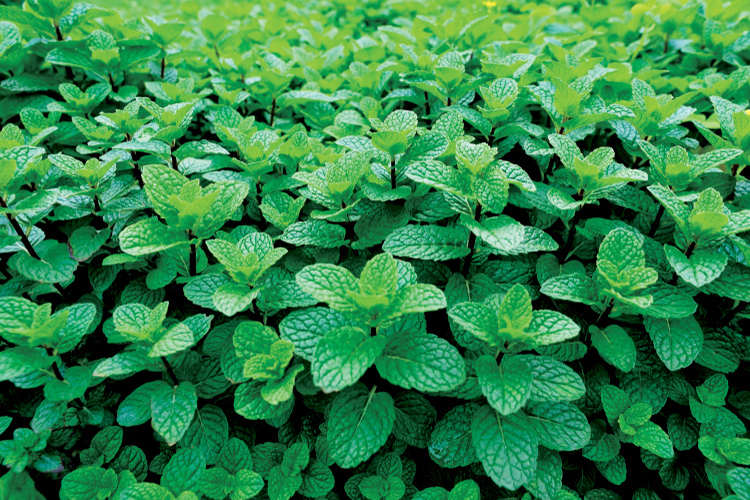Home > Oregon > Oregon Crops & Livestock > Oregon Mint Adds Flavor to Products Worldwide
Oregon Mint Adds Flavor to Products Worldwide
 The next time the fresh, aromatic mint flavor in toothpaste hits your tongue, think Oregon. Odds are the mint was grown in the state that is known for being green.
The next time the fresh, aromatic mint flavor in toothpaste hits your tongue, think Oregon. Odds are the mint was grown in the state that is known for being green.
Oregon leads the nation in production of peppermint, and the state’s mint oil is favored by producers of gum, candy, mouthwash and toothpaste.
“Willamette Valley mint oil in particular is highly desirable,” says Bryan Ostlund, administrator of the Oregon Mint Commission. “Our temperate climate, which gives us an advantage on so many crops, whether it is berries or wine grapes, and our good, fertile soils and historically ample water provide all the ingredients to slowly bring the plants to the proper menthofuran levels that we look for in the oil profile.”
In addition to the Willamette Valley, mint is grown in central Oregon, the Klamath Falls area, in Union County and in the Columbia Basin.
Mint is used extensively in chewing gum, the confectionery industry, and as flavoring in products such as dental floss, and cough syrup.
Mint also is a popular scent in aromatherapy, where it has been found to benefit mental alertness. And high-end tea producers, such as Stash Tea of Tigard, also utilize Oregon-grown mint for their products.
“We believe mint from the Pacific Northwest is the best mint in the world,” says Amy Austin, marketing director for Stash Tea Company. “Our farmers do a great job of always supplying us consistent quality, and we’re really proud of our peppermint tea. We will put it up against anybody else’s on the market.”

By acreage, mint is not one of Oregon’s biggest crops, but with an annual production value of $41 million, it is a significant contributor to the state’s economy. And for those 75 or so growers who produce mint, it tends to be a vital part of their crop mix. Tim Butler, who operates a family farm with his brothers near Stayton, ventured into mint production in 1995.
“It takes a lot of equipment to go into mint. It is not an investment for the faint of heart,” Butler says. “But mint goes really well with our current farm operation. It is not a windfall, so to speak. But it is a good, stable crop. If you manage to get the production up and the prices stay constant, you can do okay on it.”
Butler maintains his mint fields for four to five years before replacing them with a grass seed or vegetable crop.
When mint is ready for harvest, Butler cuts the crop with swathers and leaves it to dry in fields, where he will lower the moisture level to between 20 percent and 35 percent. With a forage harvester, he then chops leaves and blows them into steel tubs that are towed behind the choppers.
The tubs are brought to a distilling facility, where steam is pumped through lines connected to the bottom of the containers, pulling oil from the mint leaves and creating a condensate of oil and water that is easily separated, allowing distillers to capture the essence of the mint plant. The oil is then moved through the supply chain to the end user, where it will be used to flavor that gum, toothpaste, mouthwash or candy that bursts with flavor from Oregon.
Once processed, mint oil is almost entirely stable, able to be stored for extended periods. “There was mint oil that was found in Egyptian tombs that was still good,” Ostlund says.




Raised in prineville often passed mint fields always a trete but never took time to stop a d investigation of a regret!!!